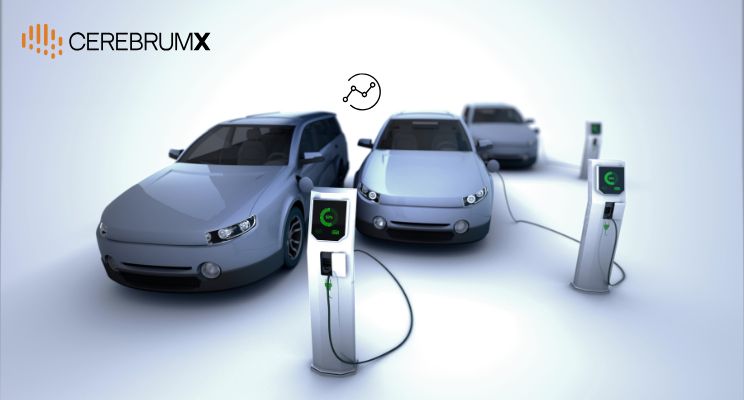The electrification of fleets is no longer a distant vision—it’s a growing priority for businesses navigating evolving regulations, rising fuel costs, and sustainability commitments. And it’s happening now. But while the case for electric fleets is strong, the transition from internal combustion engine (ICE) vehicles to electric vehicles (EVs) is far from plug-and-play. Operational challenges—ranging from range anxiety to performance management—often slow adoption and limit scale.
This is where connected vehicle data emerges as the silent enabler, not only bridging the gap between traditional and electric fleets but also laying the groundwork for smarter, scalable, and sustainable operations.
Beyond the Switch: Understanding the Nuances of Electrification
Unlike traditional gasoline-powered fleets, electric fleets introduce new layers of complexity. Charging cycles replace fuel stops. Range becomes a dynamic metric, influenced by weather, terrain, and load. And maintenance shifts from oil changes to battery health.
For a fleet operator, these aren’t just changes in hardware—they’re changes in operational logic. Without deep visibility, real-time context, and predictive insights, the shift can feel like navigating blindfolded.
Connected vehicle data changes that narrative.
Turning Data into Direction: Real-Time Visibility that Drives Confidence
Every connected EV becomes a live node, transmitting thousands of data points on battery health, range, regenerative braking, charging habits, and more. When aggregated, these insights give fleet managers a real-time dashboard of health, usage, and availability—much like a control center for electric mobility.
For example, range anxiety—one of the biggest barriers in EV adoption—is not just a driver concern, it’s a business risk. Without a reliable estimate of whether a vehicle can complete a route, planning becomes guesswork. With embedded data feeding live and predictive range analytics, this guesswork is replaced by certainty. Managers can assign trips with precision, knowing exactly how far a vehicle can go before the next charge.
Adapting for All Distances: Optimizing EVs for Urban Loops and Long-Hauls
One size doesn’t fit all in EV fleets. Urban delivery vehicles, often operating in dense stop-start traffic, have very different performance profiles compared to inter-city transport vans or long-haul trucks.
Here, connected vehicle data acts as a tuning mechanism. It identifies which vehicle types and models perform optimally on which routes, under what conditions. It captures how much regenerative braking is helping urban vehicles recharge on the go, or how battery temperatures behave on longer routes. Over time, this builds a performance intelligence framework that guides future purchases, route allocation, and even driving behavior.
Instead of speculating on which EV is right for which use case, fleet operators get answers backed by operational proof.
Scaling Beyond Pilots: Smarter Planning, Faster ROI
Many organizations start with a few EVs as a pilot, only to find that scaling up is harder than expected. Questions around charging stations, downtime, grid dependency, and total cost of ownership quickly complicate the expansion roadmap.
This is where connected insights prove invaluable. Historical usage patterns help identify ideal locations for chargers—where dwell time is high, or where battery levels consistently run low. Predictive maintenance analytics reduce unscheduled downtime, keeping the fleet moving. And integrated TCO dashboards powered by live data help benchmark operating costs against ICE counterparts—clearly demonstrating ROI and justifying further investments.
Connected data takes the guesswork out of growth.
Bridging the Operational Divide: Managing a Mixed Fleet Cohesively
Very few organizations can flip a switch and go all-electric. The reality is a hybrid period—a mix of EVs and ICE vehicles that must be managed side by side.
Connected platforms unify this experience. Instead of juggling two operational playbooks, fleet managers can rely on a single dashboard where electric and traditional vehicle data converge. Performance comparisons, maintenance alerts, route tracking, and fuel vs. charge costs can all be monitored together, helping operations stay agile and data-driven throughout the transition.
Sustainability with Substance: Proving Progress, Not Just Promising It
Sustainability goals are no longer optional. Connected vehicle data becomes a digital audit trail, showcasing reduced emissions per route, improved energy efficiency, and smarter usage patterns.
For B2B enterprises bidding on eco-conscious contracts or applying for green subsidies, this level of reporting can tip the scale in their favor.
It’s Not Just About EVs—It’s About Intelligence
Electric fleets are not just a technology shift; they’re a strategy shift. Success lies not in just replacing fuel tanks with batteries, but in replacing assumptions with data. Connected vehicle insights offer that edge—bringing clarity, agility, and foresight. The road to electrification isn’t linear, but with the right data under the hood, it becomes not just navigable—but transformative.

